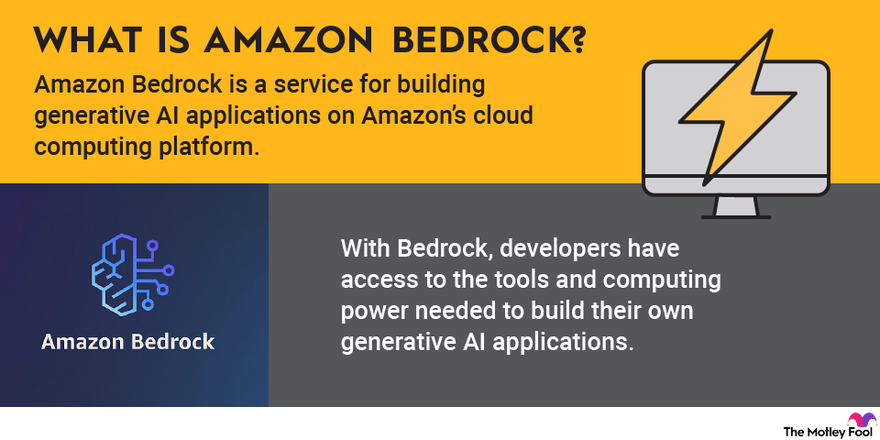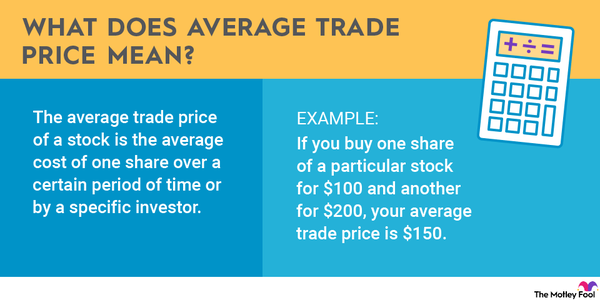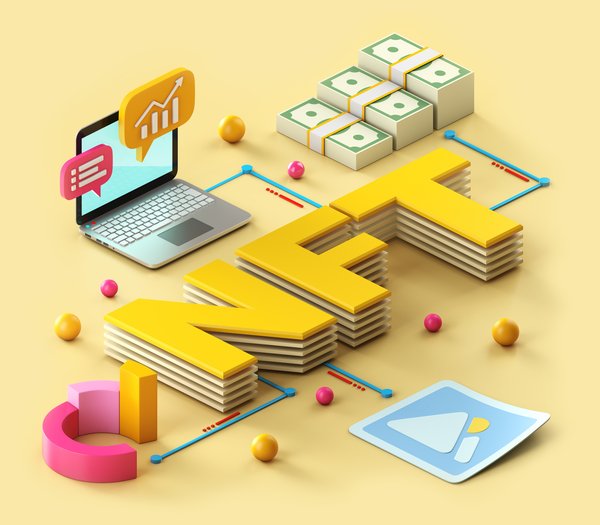Amazon (AMZN -1.59%) Bedrock is a service for building generative AI applications on Amazon’s cloud computing platform. Generative AI applications like Chat-GPT from OpenAI and Stability AI’s Stable Diffusion take natural language prompts and use them to generate original text, images, music, video, and many other outputs. With Bedrock, Amazon is providing developers access to the tools and computing power needed to build their own generative AI applications.

What is it?
What is Amazon Bedrock?
Amazon Bedrock is a part of Amazon Web Services (AWS) that offers developers access to foundational models and the tools to customize them for specific applications. Developers don’t need to build their own infrastructure to train and host their applications. Instead, they rely on AWS’s cloud.
The goal of Amazon Bedrock is to make it as easy as possible for developers to build and deploy generative AI applications. It does this by offering foundational models -- the large language models (LLMs) built by other companies -- to serve as the backbone of a new application. It partners with AI21 Labs, Anthropic, and Stability AI to offer its LLMs for developers to build on. Developers can then add their own custom data to further train the model and build out their applications before deploying it with AWS’s cloud.
Amazon has developed its own chips designed for training AI models and producing inferences, in order to reduce workloads and save money on computing.
What makes it different?
What makes Amazon Bedrock different?
Amazon’s biggest cloud computing competitors offer similar services to build generative AI applications, so why would a company choose to work with Amazon?
Importantly, Amazon isn’t currently developing consumer-facing generative AI applications. Meanwhile, Microsoft (MSFT 0.45%) invested in OpenAI, the company behind ChatGPT and Dall-E. Alphabet (GOOG -0.43%) (GOOGL -1.19%) is developing Bard, its own AI-powered chatbot, using its LaMDA model.
If a developer wants to make a competing product, it would behoove them not to give money to their biggest competition.
Additionally, Amazon is providing access to its own AI model, Titan. Developers interested in using Amazon’s models will have to use AWS.
Amazon also has developed its own chips designed for training AI models and producing inferences, i.e., responses to prompts, dubbed Trainium and Inferentia, respectively. The chips are specially designed to reduce workloads and save money on computing. So using AWS could be less expensive for many developers than its competition. It’s worth noting, however, that both Microsoft and Google have their own chip designs for AI training.
How is it used?
What kind of applications can developers make with Amazon Bedrock?
With the ability to tap into multiple foundation models and add their own data, developers can create all sorts of different applications. Amazon provides the following examples:
- Text generation. Create original stories, essays, emails, or web pages.
- Chatbots. Build conversational bots or virtual assistants.
- Search. Allow AI to synthesize information and provide answers based on large data sets.
- Text summarization. Provide a summary of articles, books, blog posts, and other writing.
- Image generation. Create photorealistic or artistic renderings of anything based on a natural language prompt.
- Personalization. Improve recommendations and discoverability for customers or users.
The generative AI opportunity
The global generative AI market could reach $109 billion by 2023, according to analysis from Grand View Research. With the growing demand for generative AI applications for use in just about every industry, cloud computing providers have an opportunity to help businesses develop and scale their applications. About 10% to 20% of total revenue in generative AI goes to cloud providers, according to analysts at Andreessen Horowitz.
That’s a massive tailwind for an industry that’s seen growth rates decline in recent years. With cloud computing a major profit center for both Amazon and Microsoft, it makes sense that both are investing heavily in providing tools to developers for generative AI implementations.
As Andy Jassy put it in his 2022 letter to Amazon shareholders, “Let’s just say that LLMs and Generative AI are going to be a big deal for customers, our shareholders, and Amazon.”















































































